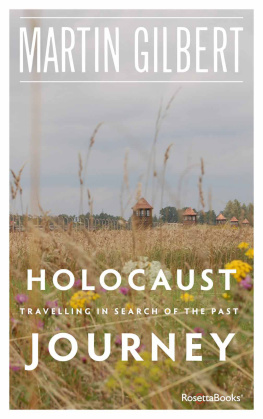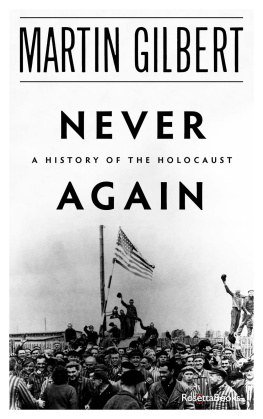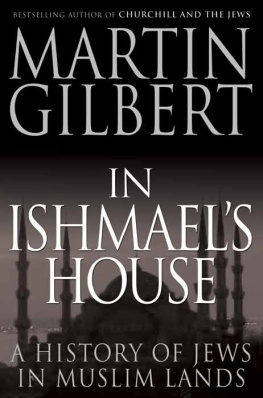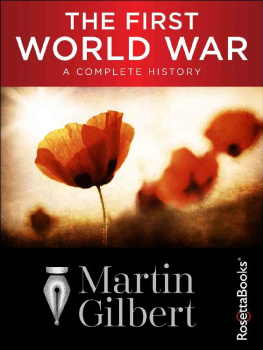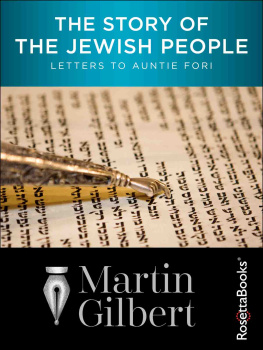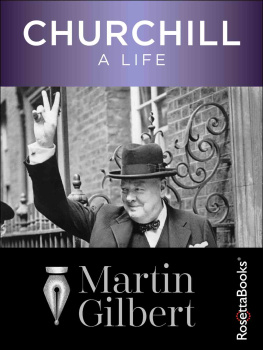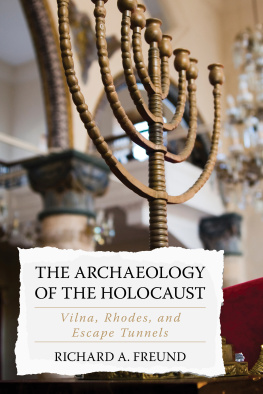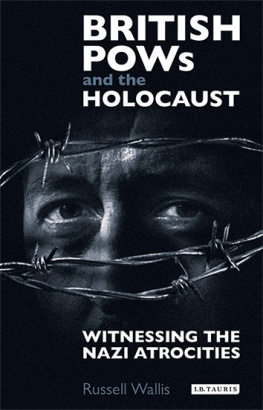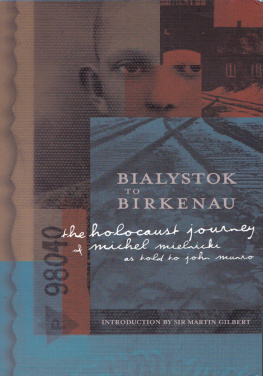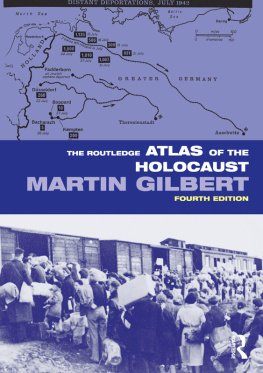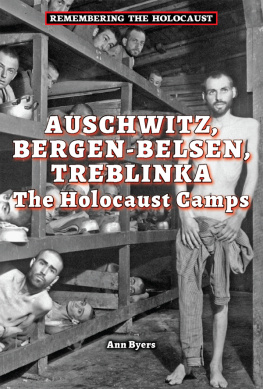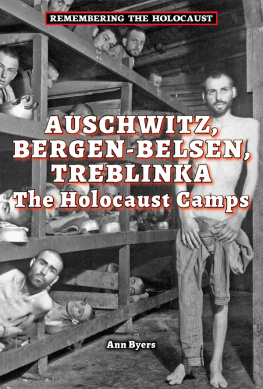Table of Contents
Pagebreaks of the print version
Guide
Holocaust Journey
Travelling in Search of the Past
Martin Gilbert
Holocaust Journey: Travelling in Search of the Past
Copyright 1997 by Martin Gilbert
All rights reserved. No part of this book may be used or reproduced in any form or by any electronic or mechanical means, including information storage and retrieval systems, without permission in writing from the publisher, except by a reviewer who may quote brief passages in a review.
Electronic edition published 2015 by RosettaBooks
Cover design by Brehanna Ramirez
Cover image by tgraham (flickr.com)
ISBN (EPUB): 9780795346774
ISBN (Kindle): 9780795346781
www.RosettaBooks.com
This book is dedicated to my MA students at University College, London, who asked me if I would take them to some of the places we had been studying during their course on the Holocaust. Without their companionship this diary could not have been written:
Jon Boyd
Rachael Fraenkel
Caroline Harris
Herut Hoskin
Angela Jayson
Marie Lindblad
Rosalind Morris
Paul Neville
Robin ONeil
and
Petra Wstefeld
ILLUSTRATIONS
SECTION ONE
SECTION TWO
SECTION THREE
LIST OF MAPS
DAY ONE
DAY TWO
DAY THREE
DAY FOUR
DAY FIVE
DAY SIX
DAY SEVEN
DAY EIGHT
DAY NINE
DAY TEN
DAY ELEVEN
DAY TWELVE
DAY THIRTEEN
DAY FOURTEEN
INTRODUCTION
Halfway through the first year of the newly introduced Holocaust MA degree at University College, London, my students asked me if I would take them, once term was over, to some of the places we had been learning about. It was an unexpected proposal, but an intriguing one. I set about preparing an itinerary, and we made the journey in the summer of 1996. It lasted two weeks.
Our group was a mixed one. As well as the eleven graduates, there was my friend Ben Helfgott. As a boy, he lived in the Polish town of Piotrkow Trybunalski, and survived the Piotrkow ghetto and several slave labour camps. We were to visit his home town on the last day of our journey. We were also joined by Suzanne Bardgett, who had recently been put in charge of preparing a permanent Holocaust exhibition within the Imperial War Museum. A member of her team, Kathy Jones, joined us when we reached Poland.
The graduates met together for our two-hour class each week for nineteen weeks, and had begun to establish a close rapport. The often appalling nature of the subject that we were studying seemed to help create a bond of friendship. One of the graduates, Robin ONeil, was a retired Detective Inspector who had become, in the previous few yearsafter twenty-five years in the police forcean expert on everything relating to Oskar Schindler. He would take us to Schindlers factory in Cracow.
The material I prepared for the journey related to the history of the places we would visit, both before and during the war. We would be in cities and towns which had experienced an important and creative Jewish past, as well as destruction. We would also be making our way to the sites of ghettos, concentration camps and death camps, where the written and oral evidence that has survived was painful to read out. The plan was for me to read aloud from letters, documents and memoirs that related to what had happened at the places we were visiting or passing through.
It took several months of preparation, working out a detailed itinerary, and finding the archival material, and memoirs, that related to each town we would visit, and to the streets we would walk along. As well as the death camps established by the Germans on Polish soil, we would be visiting Germany, and the Czech and Slovak Republics. I planned to be in cities, towns and villages where Jewish life had been prosperous, and also those where it had been poor: places where Jews had been accepted, and places where they had been persecuted; places where they had lived for generations, and places to which they had been deported after swift and cruel uprootings.
For our visit to the Lublin area in south-eastern Poland, Mike Tregenza, an Englishman living in the region, and an expert on its Nazi past, would join us. For our visit to Konin, Theo Richmond helped with suggestions as to where we should go, as well as providing an indispensable map. Throughout the journey I was also able to read out recollections that had been sent to me by those who had lived in places through which we passed: for this I am grateful to Joseph Finkelstone (recollections of Chelm), John Freund (Theresienstadt), Hana Greenfield (Kolin), Arieh Handler (Magdeburg), Solly Irving (Ryki), Charles Shane (Lancut) and Professor Felix Weinberg (Usti nad Orlici).
From my book The Boys, Triumph Over Adversity, I have drawn on the recollections that were sent to me by Chaim Fuchs, Jona Fuchs, Moniek Goldberg, Pinhas Gutter, Mala Helfgott, Arek Hersh, Jerzy Herszberg, Kurt Klappholz, Simon Klin, Chaim Liss, Bob Roberts and Alec Ward. From The Holocaust, The Jewish Tragedy, I took the wartime diary extracts of Wilhelm Cornides, Alexander Donat, Yakov Grojanowski, Zygmunt Klukowski, Dr Johann Kremer, Salmen Lewental, Tadeusz Pankiewicz and Emanuel Ringelblum; and the post-war recollections of Mojsze Bejski (Plaszow), Alexander Donat (Warsaw), Dov Freiberg (Sobibor), Kurt Gerstein (Belzec), Chaim Hirszman (Belzec), Eric Lucas (Hoengen), Gisella Perl (Birkenau), Vladka Meed (Warsaw), Moishe Shklarek (Sobibor), Franciszek Zabecki (Treblinka) and Tadeusz Zuchowicz (Warsaw).
From the published transcripts of the Nuremberg Trials (19456) I have taken extracts from evidence submitted by Madame Vaillant Couturier, and documentation relating both to the Wannsee Conference in 1942 and Himmlers speech at Poznan in 1943. I have also included an extract from the evidence given at the Eichmann Trial (196061). Further historical material to which I referred during the journey was sent to me by Dr Vojtech Blodig, Pamatnik Terezin, Muzeum Ghetta; Michael Chapman, Air Queries Librarian, Ministry of Defence; Graham Day, Air Historical Branch (RAF), Ministry of Defence, London; Jeremy Gee OBE, Director of Information and Secretariat, Commonwealth War Graves Commission; Richard Judd, Hebrew Specialist Librarian, Bodleian Library, Oxford; Sheila Grossnass, Nicholas Lane, Janina Martinho, Mikhail Salman and Hallam Tennyson (the story of Dr Hautval).
I am grateful to the copyright holders of the poems printed here by Mordechai Gebirtig, Yitzhak Katzenelson, Dan Pagis and Zdenek Weinberger; and for the extracts from the writings of I. L. Peretz and Isaac Bashevis Singer. I have also quoted from an article by John Izbicki in the Jewish Chronicle, and from published works by John Bierman, Hugo Gryn and Vlasta Kladikova. I have listed all the books quoted in the bibliography, including guide books. Special thanks are due to the pioneering efforts in helping travellers of Stephen Birnbaum, Ruth Ellen Gruber and Andrzej Trzcinski.
We stopped in many places in our fourteen days, and went through many more where we did not have time to stop, but had time (in train or bus) to read and reflect. Sometimes a road sign would tell us that ten or twenty kilometres off our route was a place with a Jewish past, and we would talk about it. Each day, the events of the Holocaust determined our itinerary, but did not always dominate it; we were glimpsing at all times the history of Jewish communities, some of which dated back many hundreds of years, and in several cases more than a thousand years.

